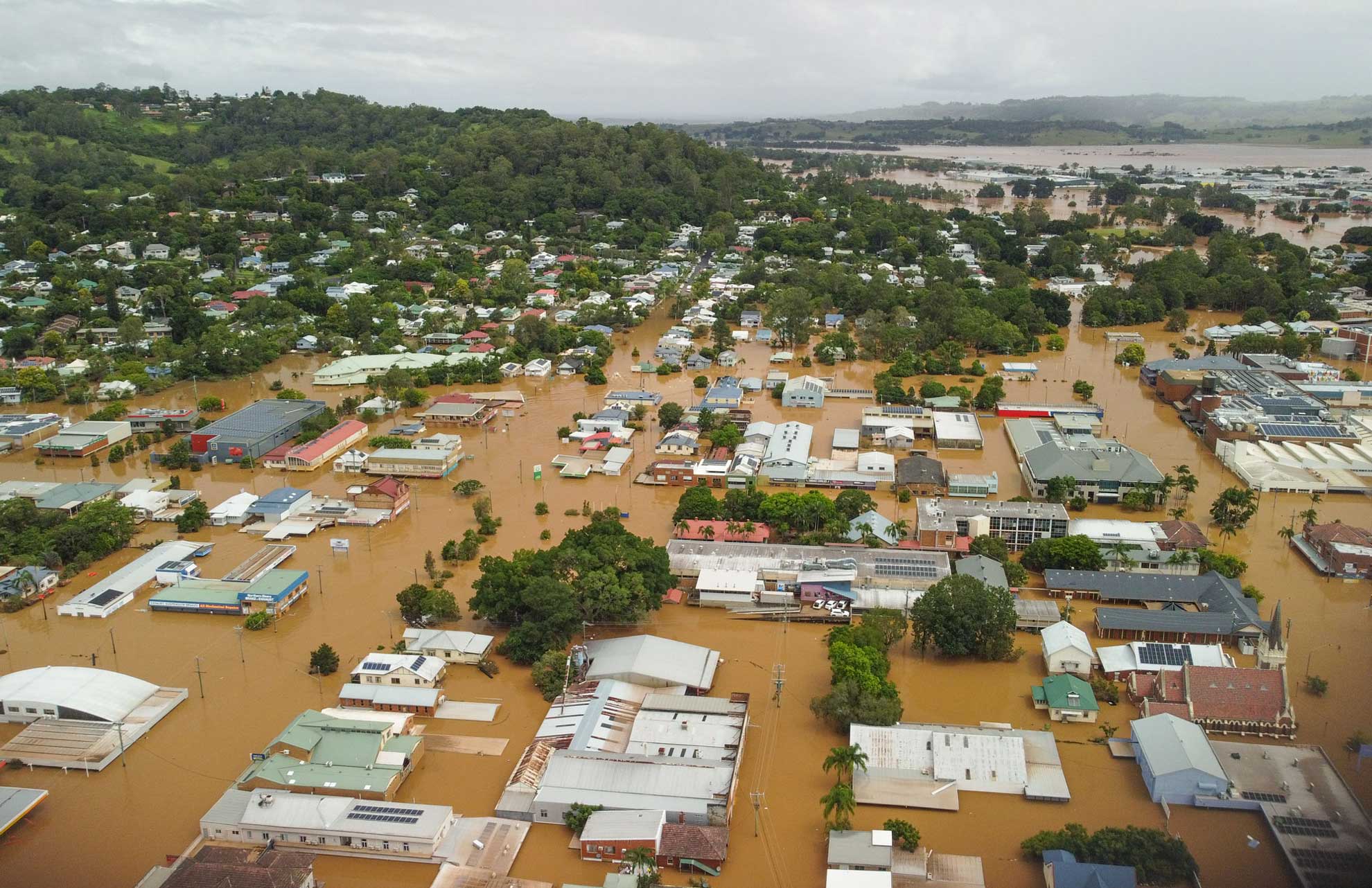7 Reasons Why You Should Choose FloodClad
POWERFUL PROTECTION DURING FLOODS/FIRES
While Governments strive to meet the issues of climate change on a number of fronts – one very innovative Australian company has been hard at work, progressively developing specialised Composite Building & Cladding products.
FloodClad offers a range of composite cladding products which are strong, durable and extremely resilient when it comes to the diverse challenges of the Australian climate. The multi-faceted levels of protection these products offer is genuinely impressive, as is their commitment to honouring the ecosystem. Refreshingly – unlike many other products on the market – the entire product line is planet-friendly, and extra kind to trees, requiring no paper products. Due to the unique manufacturing process, these products leave a very low carbon footprint.

Photo credit: David Lowe - Lismore – 1st March 2022
1. Flood/Fire/Termite Protection
While these new technology composite cladding products address serious climate concerns – they are also highly resistant to the specific extremes of climate variables within Australia.
Flooding, fires and termites are three of the greatest environmental threats many property owners face in Australia. Every year, billions of dollars worth of properties are destroyed or damaged, due to these challenges. Finally we discover a product that protects from them all (and more).
2. Better Choice, Long Term
Until recently, paper-lined plasterboard has been one of the limited choices of wall cladding for over 70 years, with little improvement – until recently, with so-called Moisture Resistant Plasterboard (MR). Compared with composite products, plasterboard is a weak product; it quickly becomes damaged and falls off walls when exposed to water or flooding. Plasterboard requires expensive, total replacement; the next time it floods, the high cost is repeated.
Alternatively, although CFC boards (Cellulose Fibre Cement) will not fall apart in flooding, but can hold moisture, leading to panel damage, rot and even mould problems. Being a cement-based product, it also serves as a bridge for energy loss. The process to produce fibre cement requires the use of a lot of resources, as does the shipping of such weighty products, so they cannot be considered environmentally-friendly or a long term solution that is economically viable for the property, people or the planet.
The beauty of FloodClad composite products is they do exactly what they are designed to do: protect people and property in multiple ways from serious threats, whilst being kind to the earth… and they last, providing long term peace-of-mind.
3. Resilient Properties vs Unaffordable Insurance
The devastating floods of March/April 2022 that caused widespread destruction in so many parts of Southern Queensland/Northern NSW all the way through to Western Sydney, are the most recent examples of the substandard, very limited performance of plasterboard (and lesser products). Due to sustained long term flooding, whole suburbs and towns were faced with a massive, overwhelming clean-up – including very high repairs and replacement costs related to re-cladding.
Unfortunately, repetitive costs incurred by replacing products such as plasterboard in these circumstances often result in ‘uninsurable properties’ or ‘unaffordable insurance’; in contrast, owners who proactively and responsibly choose to make their properties more resilient by selecting a highly protective product that genuinely performs, realise more than financial gains – they ensure greater stability and wellbeing for people living/working there, as well as caring for the planet.
Recent climate change research suggests that 1 in 25 houses may become ‘uninsurable by 2030’. Given the stringent testing, multiple benefits and outstanding performance of FloodClad composite cladding products, it’s natural that insurance companies will be likely to consider such a product their preferred choice when negotiating insurance premiums.
4. Inorganic Cladding/100% Recyclable
FireCrunch Australasia originally pioneered the use of composite cladding for fire/bushfires – guaranteeing no burning down of homes. FireCrunch now offers FloodClad – a water inert cladding, which is an MgSO4 product – scientifically developed, it is primarily inorganic composite. As an environmentally-friendly product, it is 100% recyclable.
5. Inert in Water/Quick Clean-Up
FloodClad remains inert in water and during flooding – even over long periods – and when correctly water sealed during installation, can protect timber framing from serious water absorption. After a flooding event occurs, it only requires a wash off/light scrub of water marks, and can be repainted where required. A very inexpensive, easy process, to return things back to some kind of normality.
6. Major Technology Advance
It would seem this product is the greatest single advance in construction cladding history, when it comes to multi-faceted protection/performance, economic gain and long lasting, low maintenance for dwellings in flood prone areas. With the additional strengths of fire/termite/mould protection, FloodClad offers an outstanding range of products in floors, walls, ceilings, roofing, eaves, soffits, decking etc, to suit every need.
7. Government Projects Benefit in low 5% carbon emissions MgO (New Scientist USA)
Government agencies involved in construction (and procurement of high quality products that ultimately save them huge amounts of money) would benefit by taking note of this product development – particularly where such cladding is used in temporary or emergency accommodation – as well as wherever there is risk of fire, flood, termites or mould.
The additional benefits of being a planet-friendly/low net carbon product, attest that it actively contributes positively to the 2030/2050 emission targets.
FloodClad is sold direct to builders and construction companies with national supply capability.
More info: visit floodclad.com.au, a product of the FireCrunch Group.


